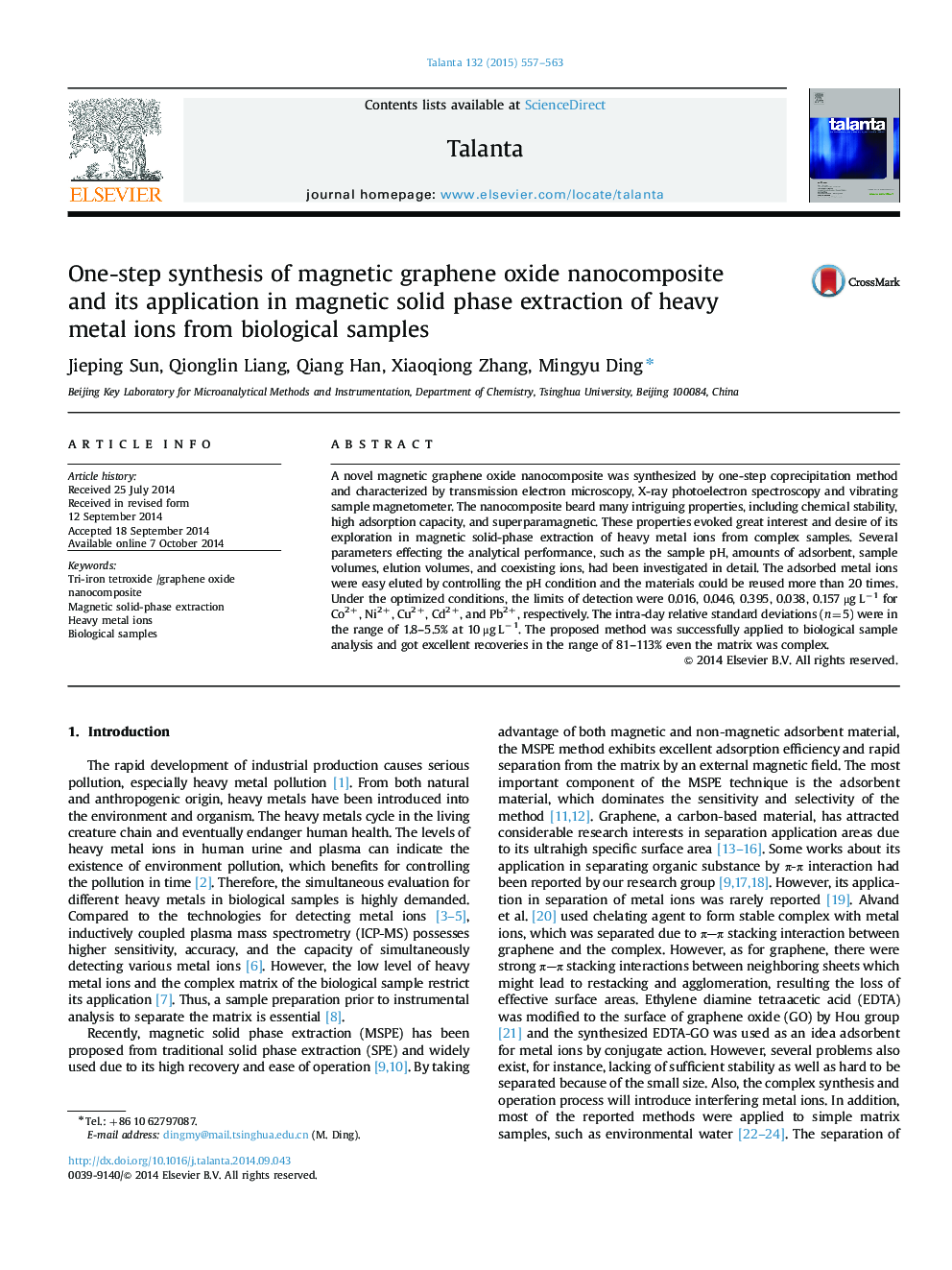| Article ID | Journal | Published Year | Pages | File Type |
|---|---|---|---|---|
| 1242053 | Talanta | 2015 | 7 Pages |
•A novel magnetic graphene oxide composite was synthesized by coprecipitation method.•The composite showedhigher adsorption capacityfor Cu2+ and Pb2+ than other ions.•The composite could be separated rapidly under magnet and reused more than 20 times.•The method was fast, precise, easy to operateand hadlow limits of detection.•The method was successfully applied to biological sample even the matrix was complex.
A novel magnetic graphene oxide nanocomposite was synthesized by one-step coprecipitation method and characterized by transmission electron microscopy, X-ray photoelectron spectroscopy and vibrating sample magnetometer. The nanocomposite beard many intriguing properties, including chemical stability, high adsorption capacity, and superparamagnetic. These properties evoked great interest and desire of its exploration in magnetic solid-phase extraction of heavy metal ions from complex samples. Several parameters effecting the analytical performance, such as the sample pH, amounts of adsorbent, sample volumes, elution volumes, and coexisting ions, had been investigated in detail. The adsorbed metal ions were easy eluted by controlling the pH condition and the materials could be reused more than 20 times. Under the optimized conditions, the limits of detection were 0.016, 0.046, 0.395, 0.038, 0.157 μg L−1 for Co2+, Ni2+, Cu2+, Cd2+, and Pb2+, respectively. The intra-day relative standard deviations (n=5) were in the range of 1.8–5.5% at 10 μg L−1. The proposed method was successfully applied to biological sample analysis and got excellent recoveries in the range of 81–113% even the matrix was complex.
Graphical abstractFigure optionsDownload full-size imageDownload as PowerPoint slide
